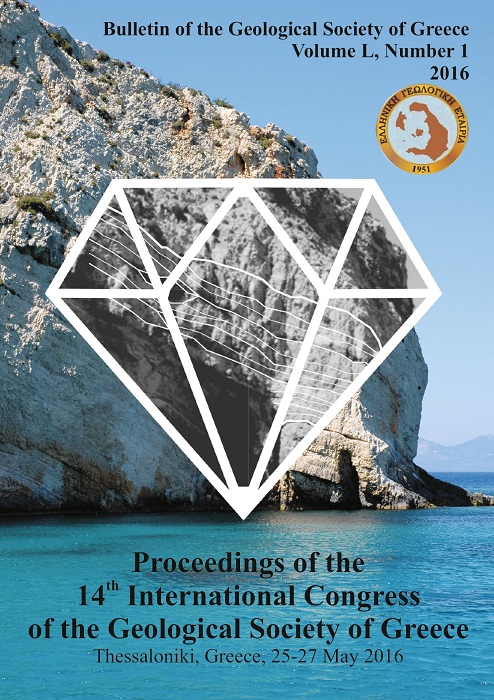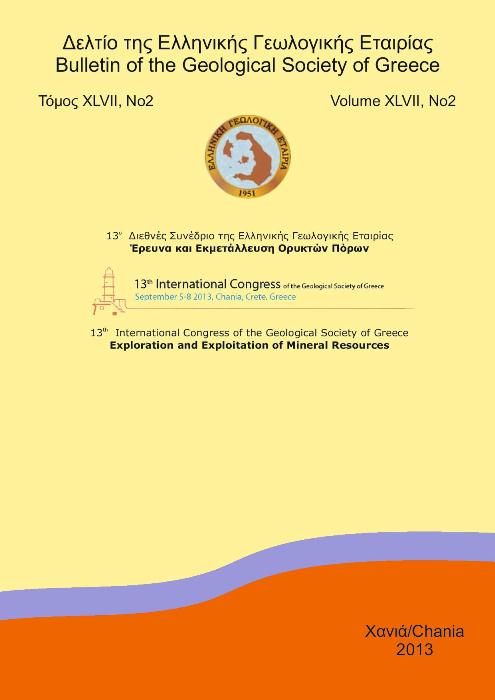SOIL EROSION ESTIMATION USING THE EPM MODEL

Περίληψη
Στην παρούσα εργασία γίνεται προσπάθεια εκτίμησης της εδαφικής διάβρωσης σε ορεινές υδρολογικές λεκάνες Μεσογειακού τύπου, με τη χρήση του ομοιώματος EPM (Erosion Potential Model). Η περιοχή μελέτης περιλαμβάνει τις λεκάνες των ποταμών Βενέτικου, Καλαμά, Άνω Ρου Αχελώου και Αράχθου (8 υπολεκάνες συνολικά). Το ομοίωμα εφαρμόζεται τόσο σε ετήσιο όσο και σε υπέρ-ετήσιο χρονικό βήμα, σε περιβάλλον GIS, λαμβάνοντας υπόψη τη χωρική κατανομή των επιμέρους παραγόντων του καθώς και την εξέλιξη του φαινομένου εντός της λεκάνης. Τα αριθμητικά αποτελέσματα αξιολογούνται αρχικά ως προς τις παρατηρημένες τιμές στερεοαπορροής (προκύπτουν από τις μετρήσεις στερεοπαροχής της ΔΕΗ στην έξοδο κάθε λεκάνης). Το ομοίωμα υποεκτιμά σημαντικά τις παρατηρημένες τιμές και στις δυο χρονικές κλίμακες. Η αμφιλεγόμενη αξιοπιστία των παρατηρημένων τιμών οδήγησε στην αντικατάσταση τους από προσομοιωμένες (μεθοδολογία καμπυλών παροχής στερεοπαροχής). Ως προς αυτές, το ομοίωμα συμπεριφέρεται καλύτερα, εξακολουθώντας όμως να υποεκτιμά τα αποτελέσματα. Εν τούτοις, η χωρική αποτύπωση του φαινομένου κρίνεται αξιόπιστη. Η φτωχή επίδοση του ομοιώματος αποδίδεται στα ιδιαίτερα χαρακτηριστικά του καθώς επίσης στις συνθήκες και το ιδιαίτερο καθεστώς στερεοπαροχής της περιοχής μελέτης.
Λεπτομέρειες άρθρου
- Πώς να δημιουργήσετε Αναφορές
-
Efthimiou, N., & Lykoudi, E. (2016). SOIL EROSION ESTIMATION USING THE EPM MODEL. Δελτίο της Ελληνικής Γεωλογικής Εταιρείας, 50(1), 305–314. https://doi.org/10.12681/bgsg.11731
- Ενότητα
- Θαλάσσια Γεωλογία και Ωκεανογραφία

Αυτή η εργασία είναι αδειοδοτημένη υπό το CC Αναφορά Δημιουργού – Μη Εμπορική Χρήση 4.0.
Οι συγγραφείς θα πρέπει να είναι σύμφωνοι με τα παρακάτω: Οι συγγραφείς των άρθρων που δημοσιεύονται στο περιοδικό διατηρούν τα δικαιώματα πνευματικής ιδιοκτησίας επί των άρθρων τους, δίνοντας στο περιοδικό το δικαίωμα της πρώτης δημοσίευσης. Άρθρα που δημοσιεύονται στο περιοδικό διατίθενται με άδεια Creative Commons 4.0 Non Commercial και σύμφωνα με την οποία μπορούν να χρησιμοποιούνται ελεύθερα, με αναφορά στο/στη συγγραφέα και στην πρώτη δημοσίευση για μη κερδοσκοπικούς σκοπούς. Οι συγγραφείς μπορούν να: Μοιραστούν — αντιγράψουν και αναδιανέμουν το υλικό με κάθε μέσο και τρόπο, Προσαρμόσουν — αναμείξουν, τροποποιήσουν και δημιουργήσουν πάνω στο υλικό.







